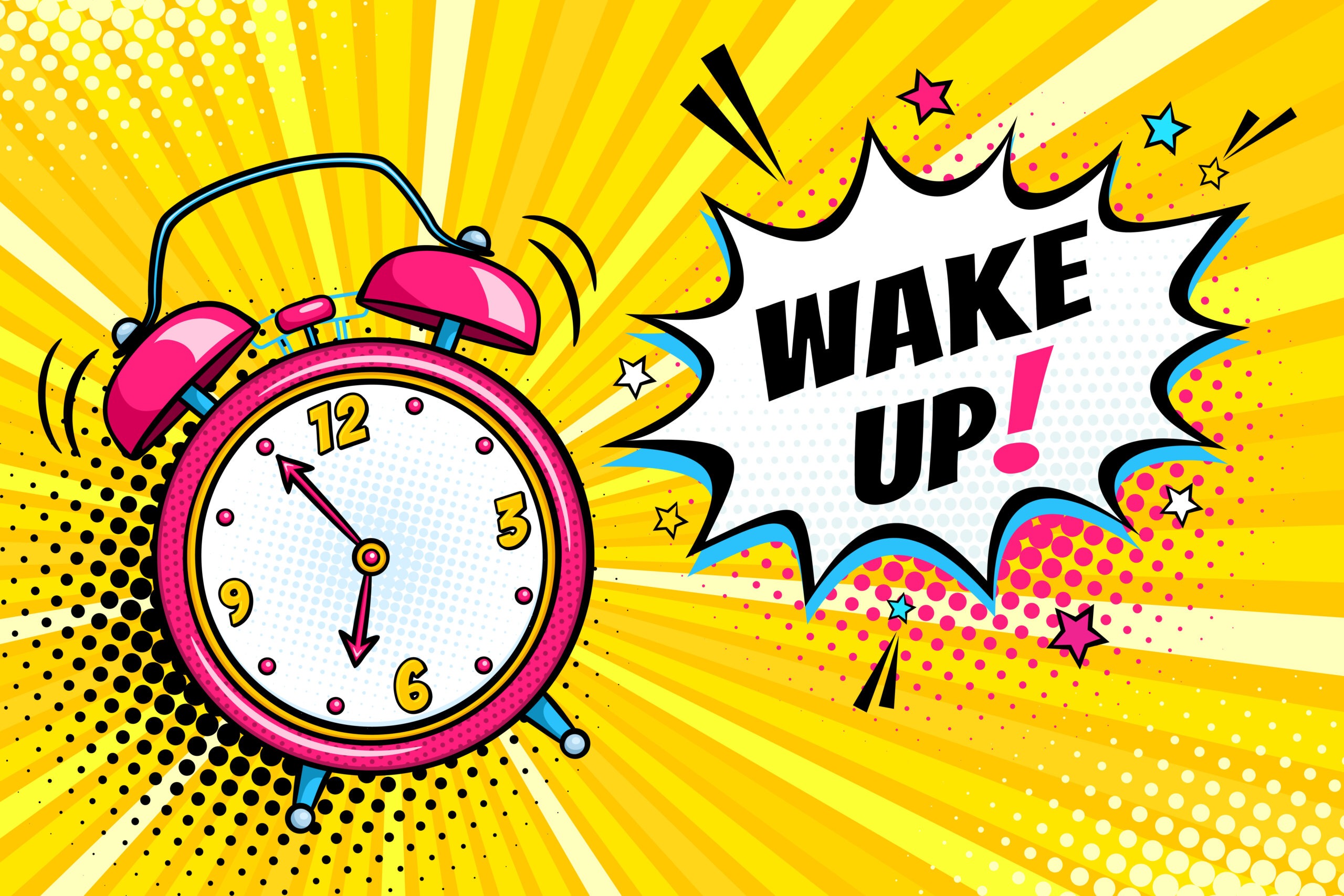
Strategically programming radio has always been an exercise in understanding the target audience’s lifestyle.
Do they commute to work or WFH? Or are they working in a hybrid situation?
What tasks or activities are they doing when they’re listening to the radio?
What time do they go to bed? And wake up?
Not to oversimplify it, but so many basic life activities are accompanied by radio listening—because it’s possible and desirable to do many things while also listening to radio without straining for most people. Multi-tasking is usually harder than it looks, but when it comes to radio listening and a host of other activities, people love to do both. And strong ratings are built out of habit—people doing the same things at the same time day after day, week after week, and year after year.
And yet, there are always mysteries associated with where people are and what they’re doing. Conventional wisdom suggests most employed folks are working so-called 9-to-5 jobs, for example. But when you look at the routines of most people, that turns out to be a fallacy that radio programmers should be factoring into their game plans.
I learned that lesson back in 1997 when Edison Research released their first “At Work Listening” study. It was an eye-opener, to say the least.
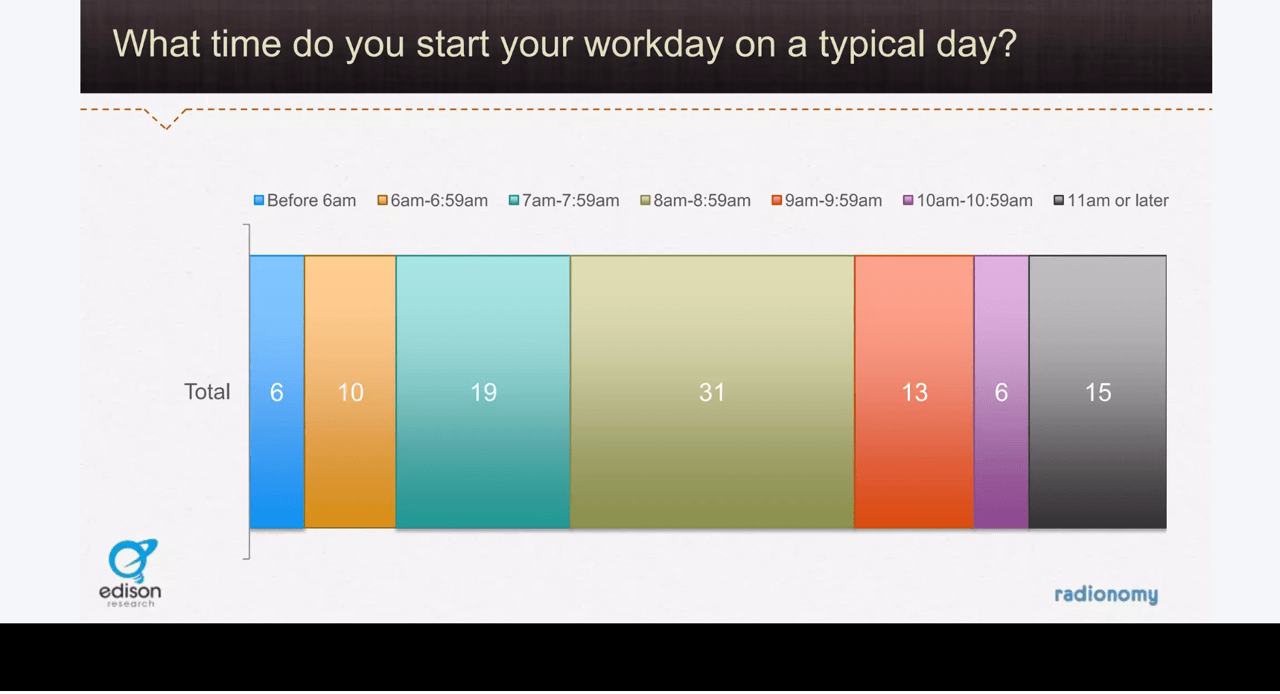
Even back then, it turned out most people didn’t start their workdays at the crack of 9. And as you’d imagine, the majority didn’t punch out at 5pm either.
Like good research, this Edison study generated important strategic debates and tactical brainstorming in the radio business when it was first published. I recall watching Larry Rosin present it several times. One of its points revolved around the idea that rock format fans listened to radio at-work nearly as much as AC P1s. And yet, most of the “listen at work” contests and direct marketing promotions during that time were taking place on female-targeted stations where it was assumed the opportunity was most fertile.
That data inspired me grab the “Workforce” contest and make it sound like it belonged on a Classic Rock station. It was also an effort that spurred many radio stations to start building up their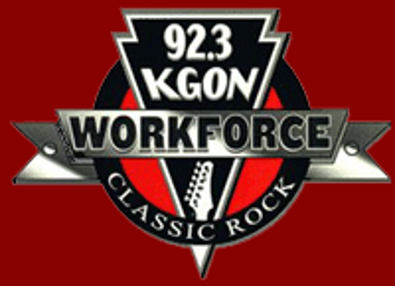 email databases, a gift that has continued to keep on giving to this day. Most of my Classic Rock clients embraced the “Workforce” initiative that put much of the promotional weight of the station on at-work listening. And it worked. In market after market, daytime listening demonstrably grew. And because all boats rise when you’re got a couple of strong dayparts outperforming their normal levels, many of our clients scored consistently strong books.
email databases, a gift that has continued to keep on giving to this day. Most of my Classic Rock clients embraced the “Workforce” initiative that put much of the promotional weight of the station on at-work listening. And it worked. In market after market, daytime listening demonstrably grew. And because all boats rise when you’re got a couple of strong dayparts outperforming their normal levels, many of our clients scored consistently strong books.
Ah, but that was a long time ago. Things have most certainly changed during this first quarter century. Or have they?
Last week, one of the big headlines in radio’s trades upended another lifestyle myth impacting radio. This headline ran in Inside Radio:
“Edison Research Finds Americans Up Early, Many Before Morning Shows Begin”
The chart below is an eye-opener that should get every morning show—like it or not—reassessing its hours and its content strategy.
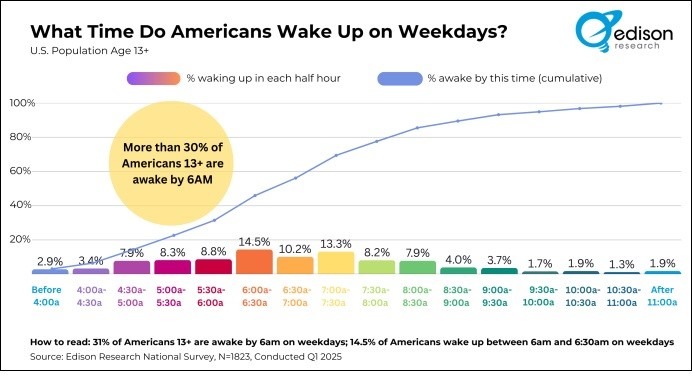
Edison’s data highlight that more than three in ten Americans 13+ are awake by 6 am should send a message to morning shows as well as the program directors and coaches that work with them. But I took it one step further: a majority (56%) crawl out of bed before 7 am. And yet, when do most morning shows truly put the full efforts into their shows? During the 7 am hour for so many radio entertainers.
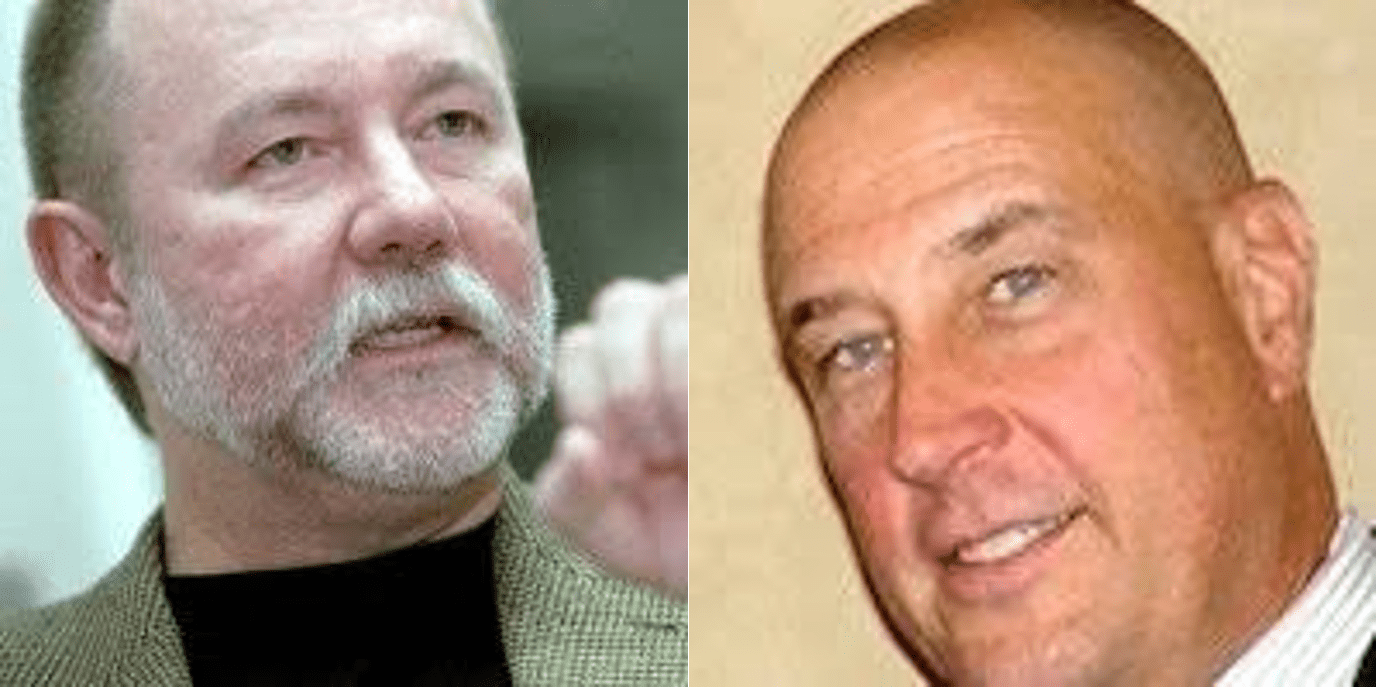
The issue was analyzed in the story by two wise and experienced consultants, Mark St. John and Alan Burns. Each gave their “take” on the implications of this data, especially to morning shows.
For St. John, it’s simple: start putting your focus on the 6 am hour rather than starting the strong content an hour later. As he advised, “Start with A-level content out of the box at 6 am…”
Burns concurs that shows that “wake up on the air” during that key hour aren’t doing their best stuff when perhaps people need it most. He pointed out that shows “need to be at full function by 6 am.”
No argument here, but let’s not forget Edison’s study talks to EVERYONE—13+ respondents with varying tastes and differing lifestyles. Your station and morning show have a much narrower and more defined target.
In our Techsurveys, we have been breaking down our findings by formats for more than a decade now. And after studying this data over the years, I can tell you fans of Country, Sports, and CHR differ considerably from one another. Their profiles no doubt exhibit different lifestyle traits, especially when it comes to fundamental behavior—like wake-up times.
And to take it one step further, listeners differ within the same format family. They may enjoy the same music, but AC fans in Shreveport are very likely following a different wake-up pattern than those enjoying KOIT in San Francisco.
As Burns points out, extreme traffic patterns in congested markets like D.C., New York City, L.A., and Houston are going to influence wake-up behavior as well. Listeners in metros and smaller towns without serious traffic issues may have a tendency to hit “snooze” a couple times before rolling out of the sack.
But there’s a solution—and it’s an easy one. Find out the answer for your station’s listening audience, a basic question to answer. If your station has a database, the answer to the question of when your listeners roll out of bed is 48 hours away.
And fundamentally, isn’t it more strategically important than knowing the “burn” scores on the songs your station is pounding in its hot rotation?
Every PD (and morning show) should know the answer to the incredibly simple but especially powerful question:
“What time do your listeners—on average—wake up on weekday mornings?
That’s an answer worth knowing.
- It’s The Christian (Radio) Thing To Do - June 3, 2025
- Is It Time For Radio to WAKE UP?! - June 1, 2025
- For Radio, The Perils Of Rebranding - May 30, 2025



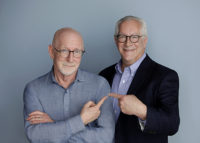
If I had $100 for every time I’ve said, “if only there were a way to know what time everybody wakes up to shower and poop“ I would be a richer than RICH.retired 50+ career DJ.
As a PD and morning host, I rarely could afford more than a ginormous music study once or twice a year. Yes, after the 585 hooks were played, we did shallow dives into user habits.
P.S. “Start at 6 AM??“ Hell by that time at least five of my competitors have already been on the air for 30 to 60 minutes. And TV news has been on since 4 or 4:30 AM.
I love these observations, Bobby. The data matters, of course, but so does the common sense that comes with knowing your competitors AND your market.
An honor to have you comment here. Congrats on your amazing career.
Maybe the question for radio PDs should be, “When do YOU wake up—and smell the coffee?” Good one, Fred.
I always believed the stations with active, awake PDs are likely to hear the best morning radio. They woon’t love everythig they hear, but at least the show will know someone in authority – and engaged – will be listening.
If you want a better handle on when most people are getting up, and go to bed, make friends with your local water utility manager.
It’s a little bit of lateral thinking, but their water usage charts will show increasing use as people get up and start to use water to wash and flush in the morning, and will show a spike when people flush on the way to bed.
No doubt local drive-thrus (coffee, breakfast) will show similar patterns when people are in their cars.
However, none of that information is any good if management decides to not follow through for reasons of cost or because they are committed to cutting their way to profit.
Paul, you got me thinking about those stories about the nation’s toilets flushing during halftime of the Super Bowl.
While water data might be telling, simply asking a station’s audience about wake-up times should get the job done.